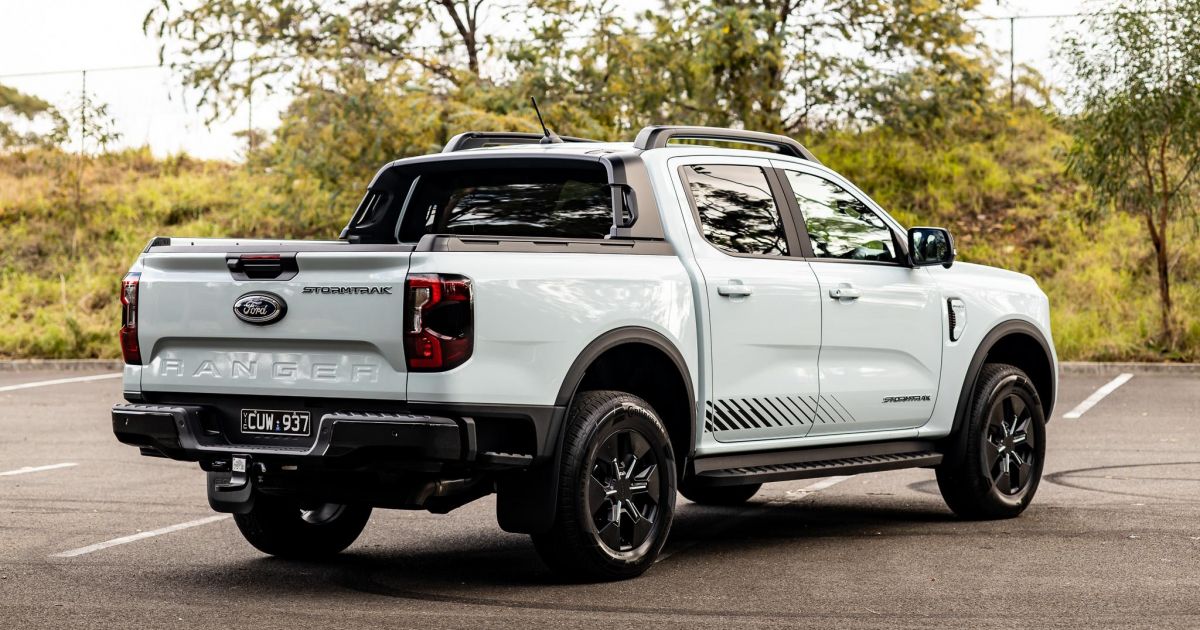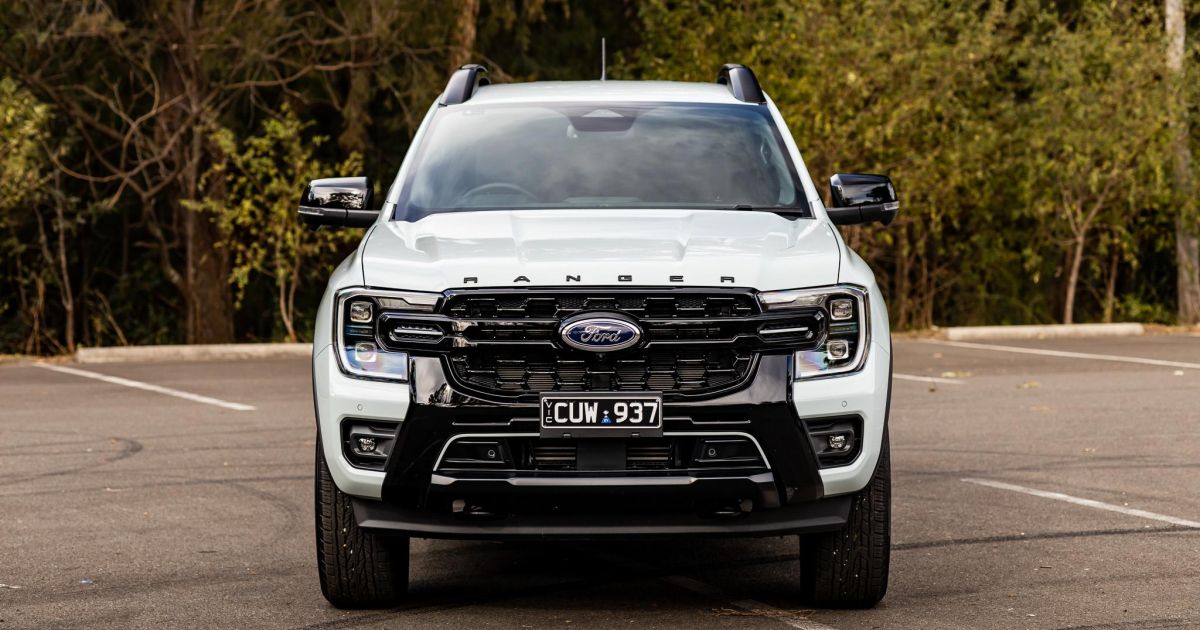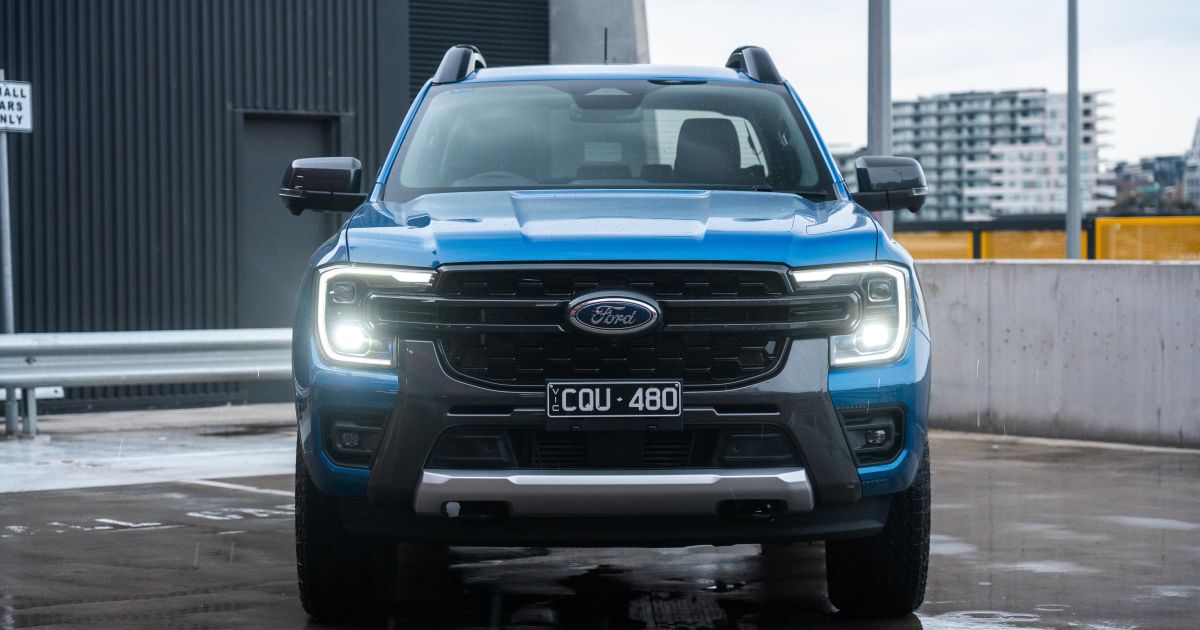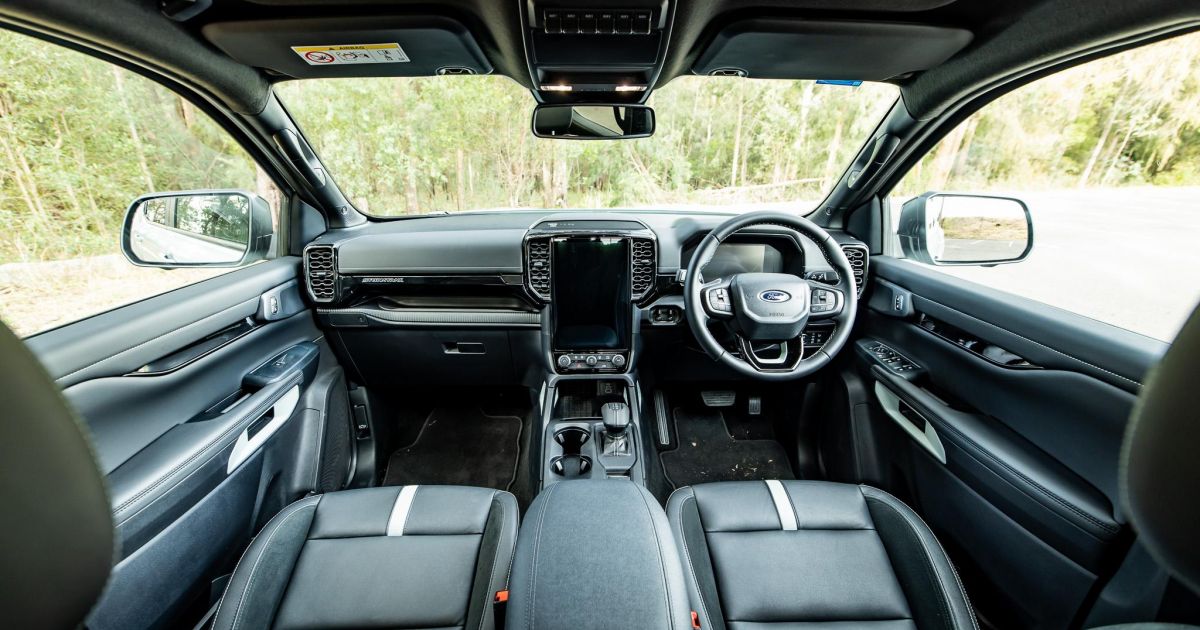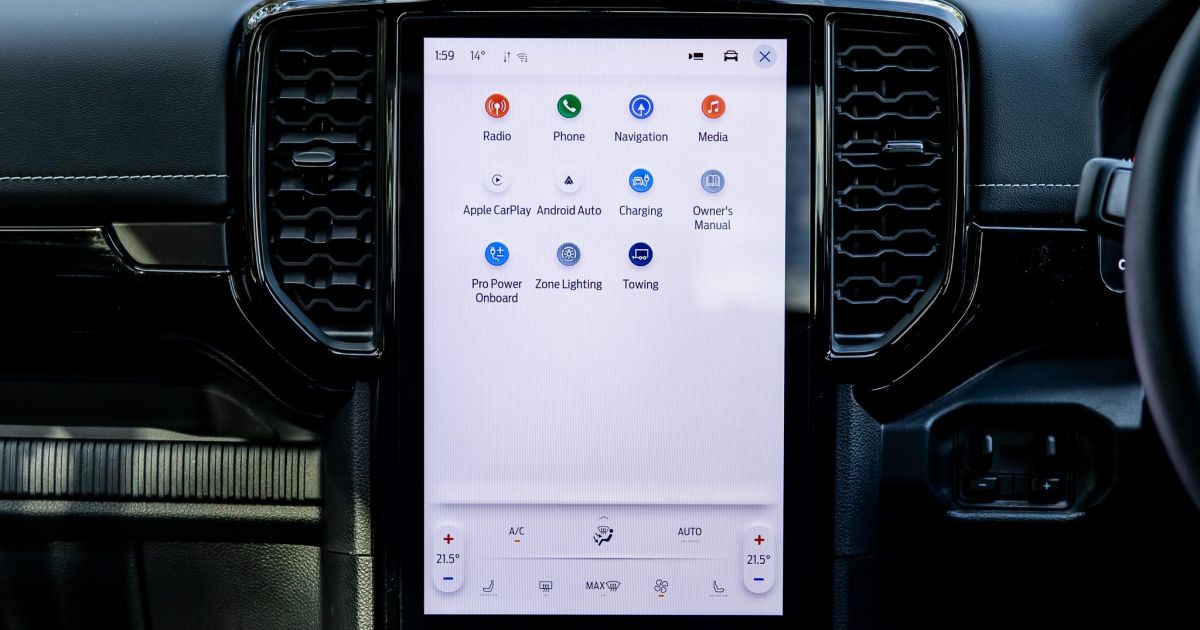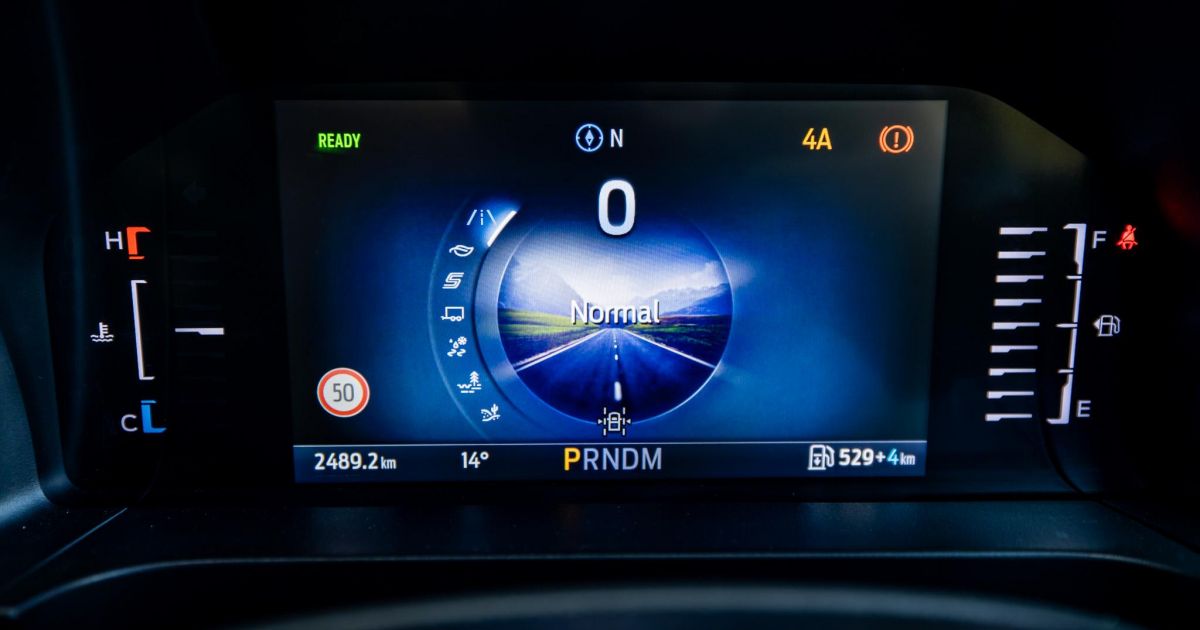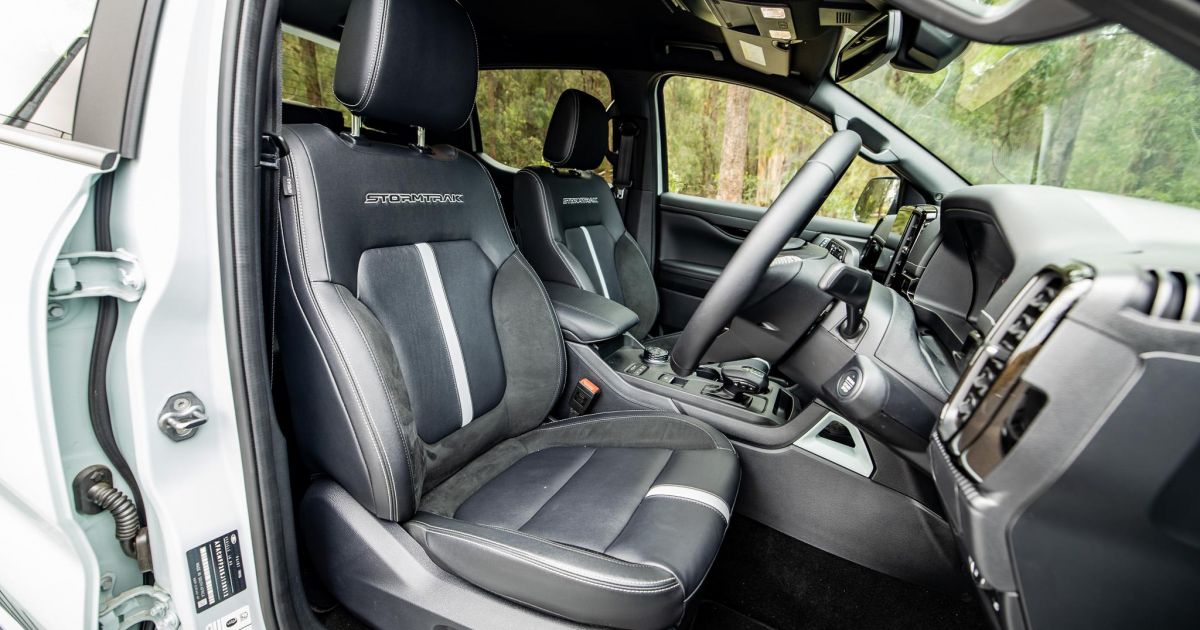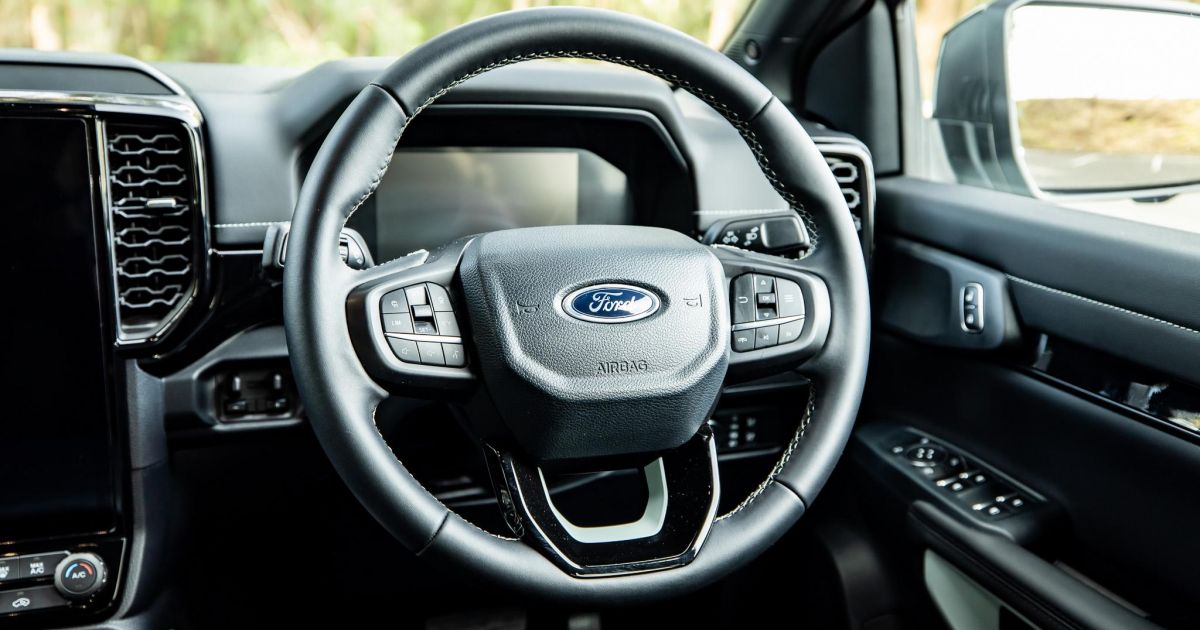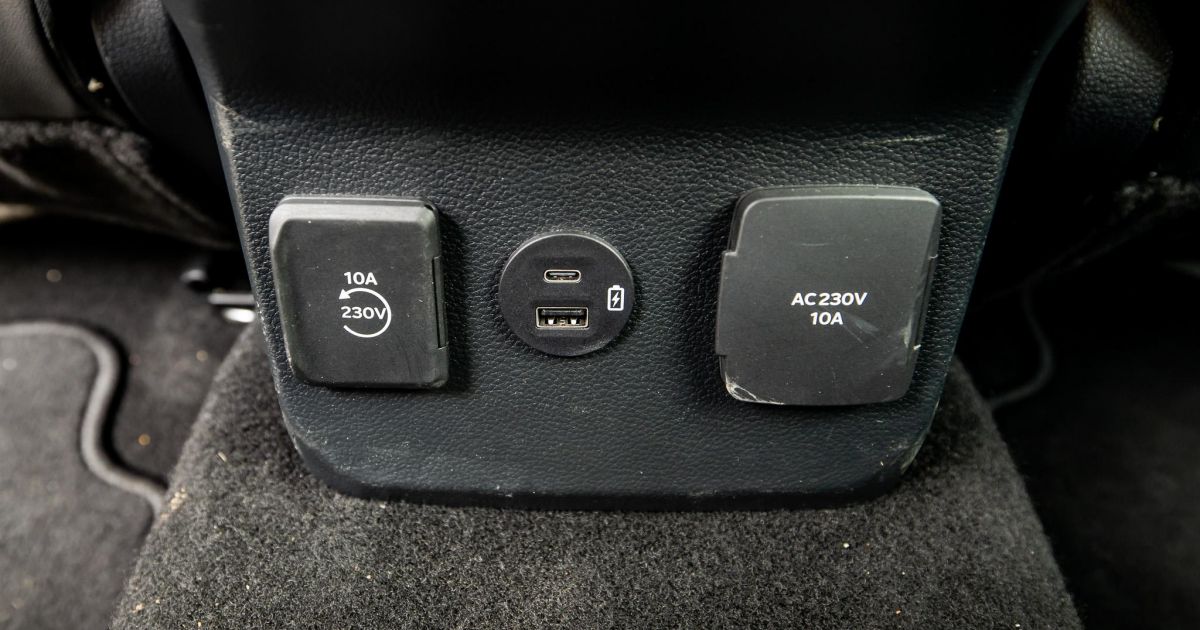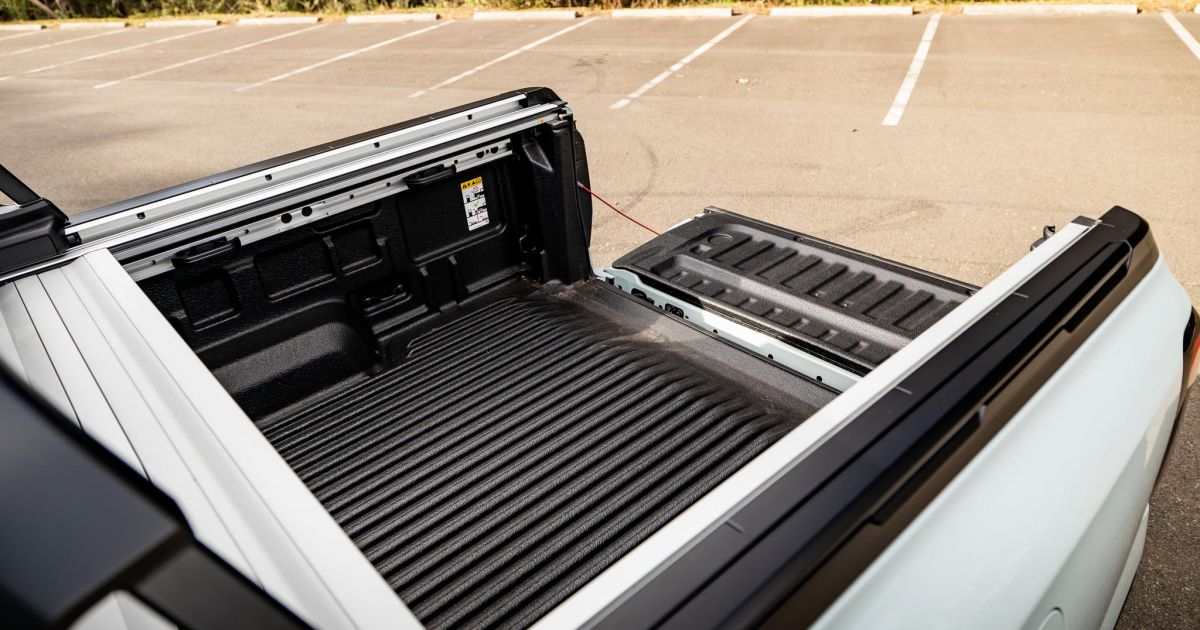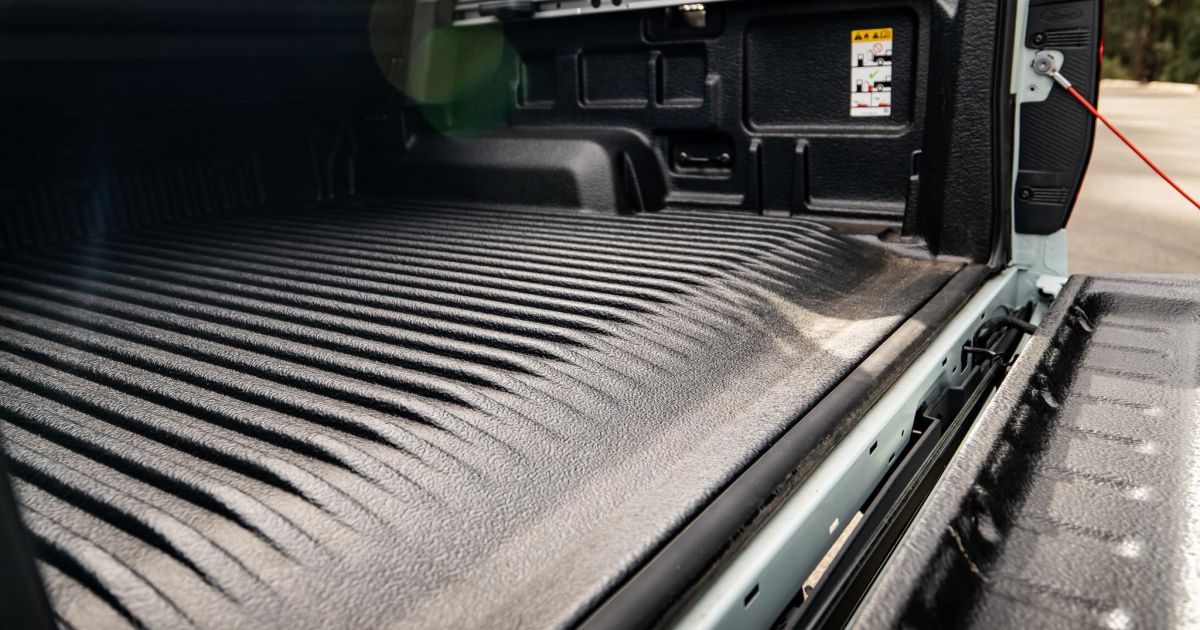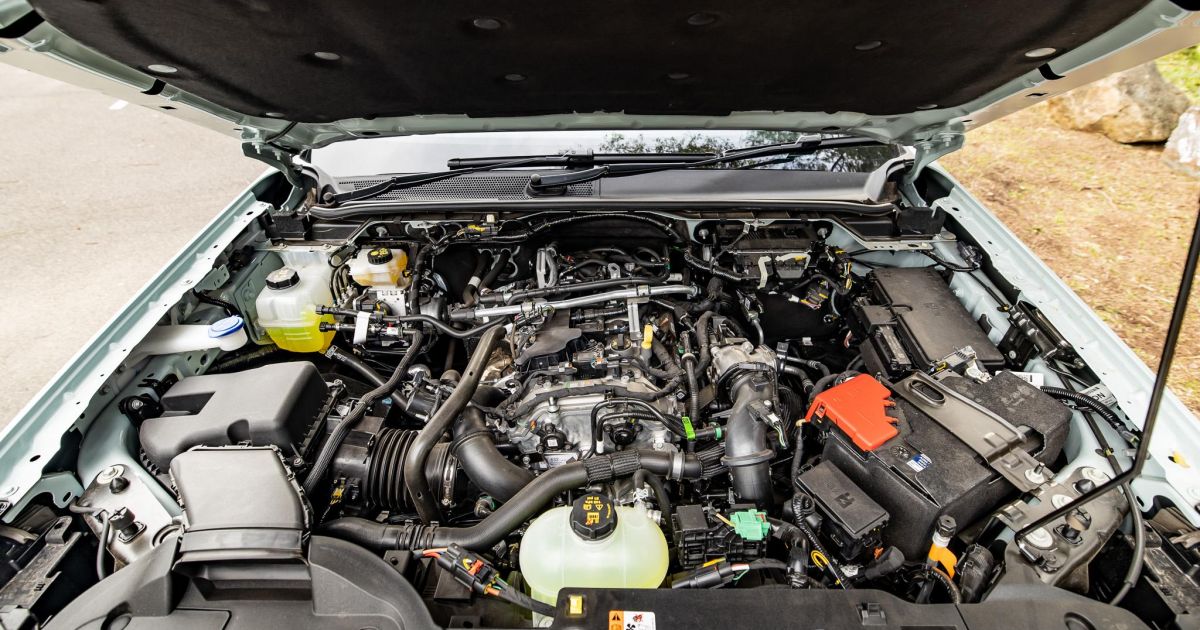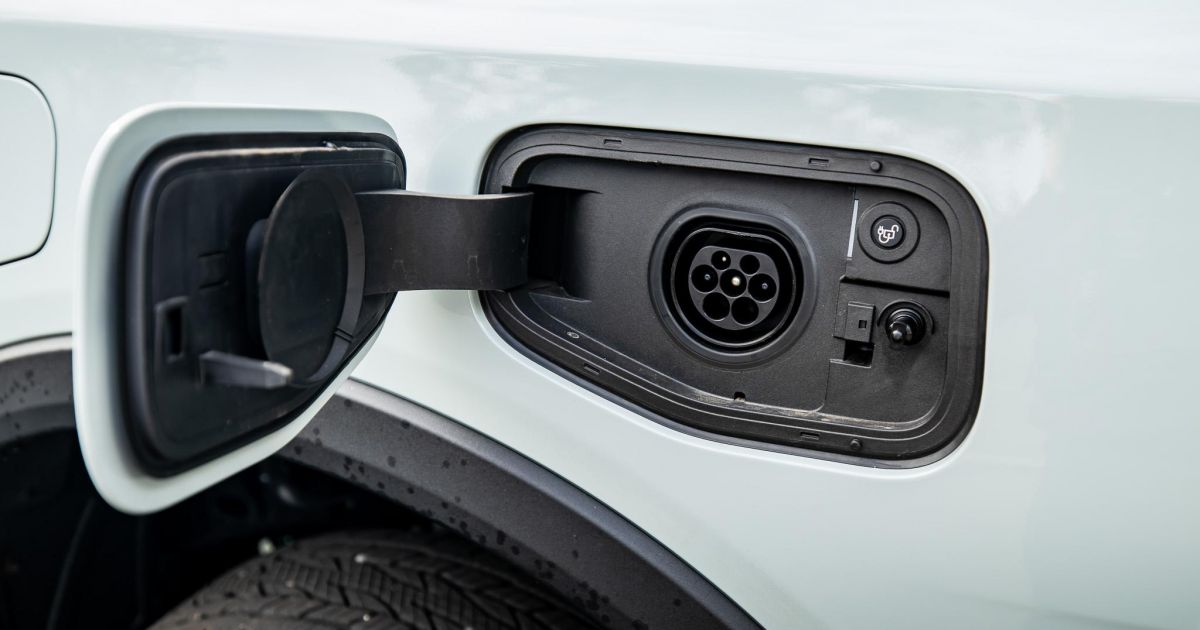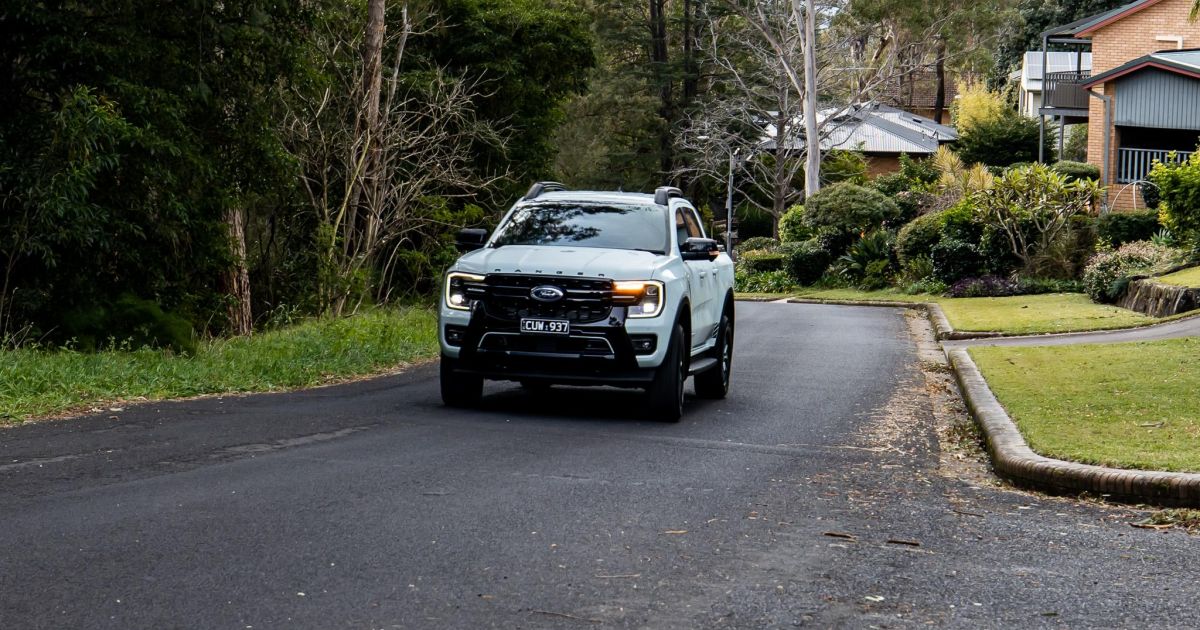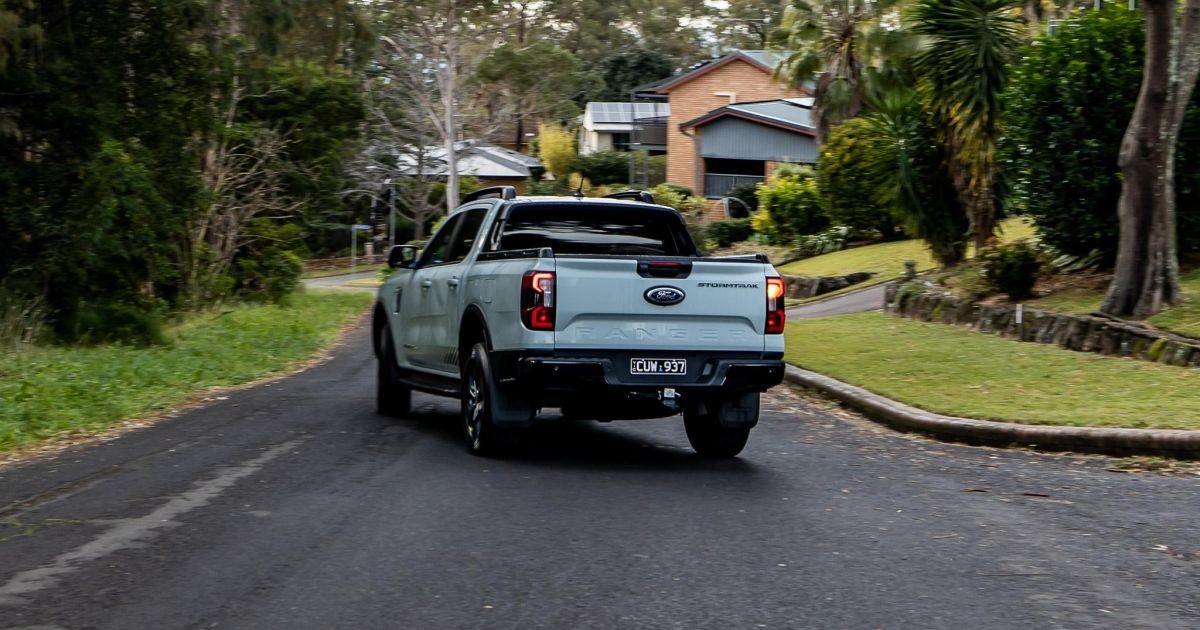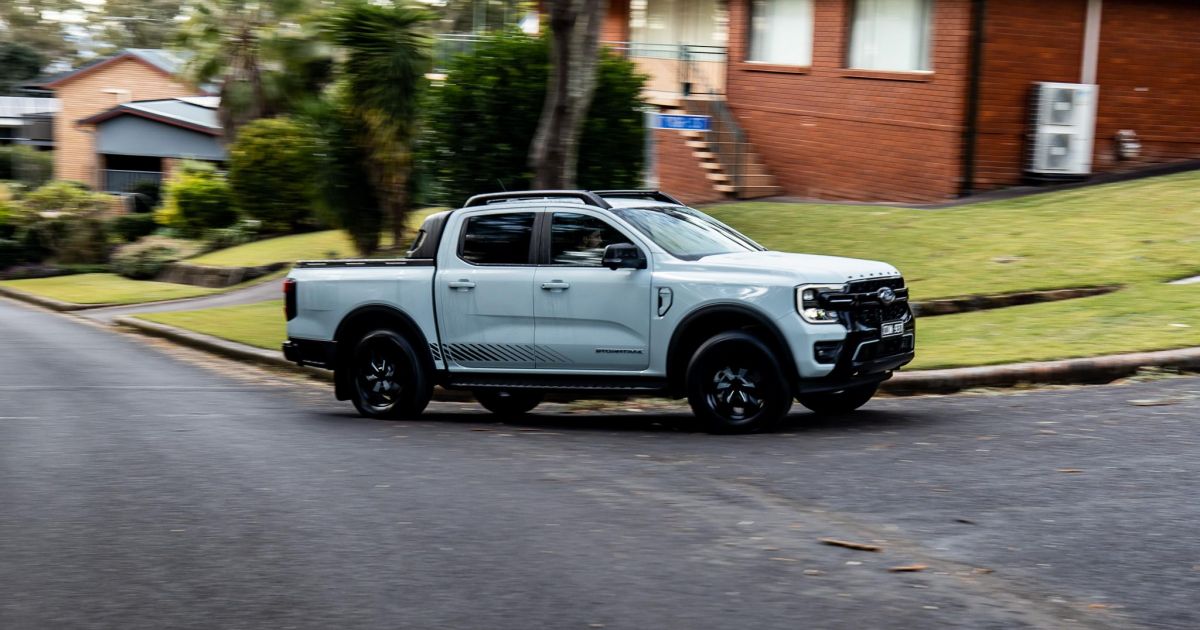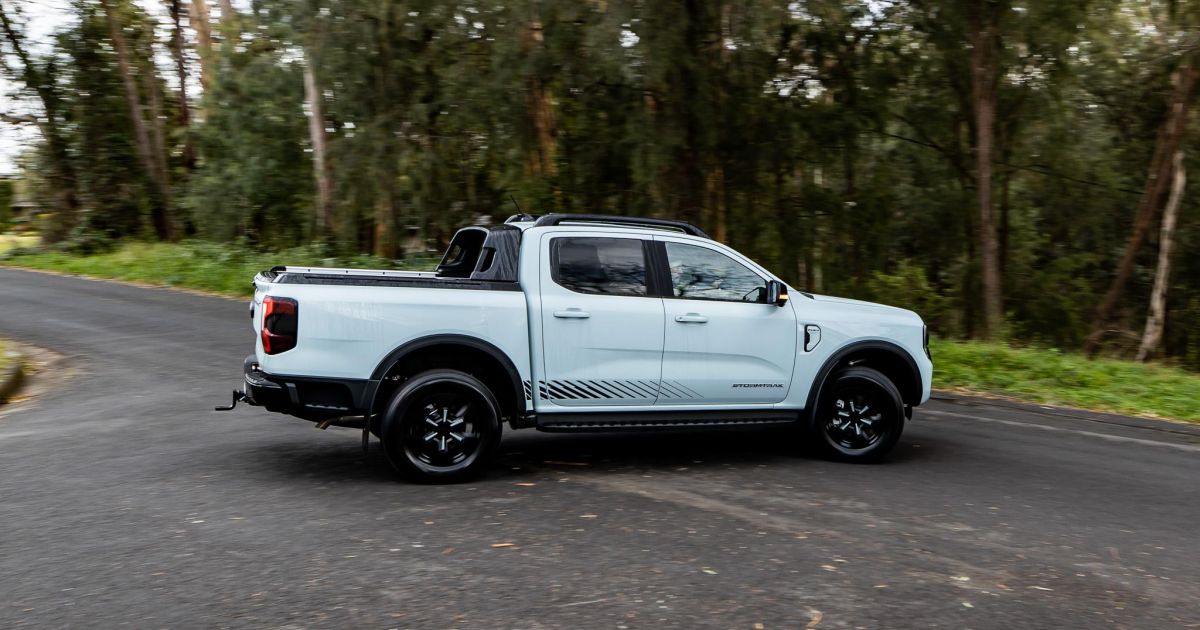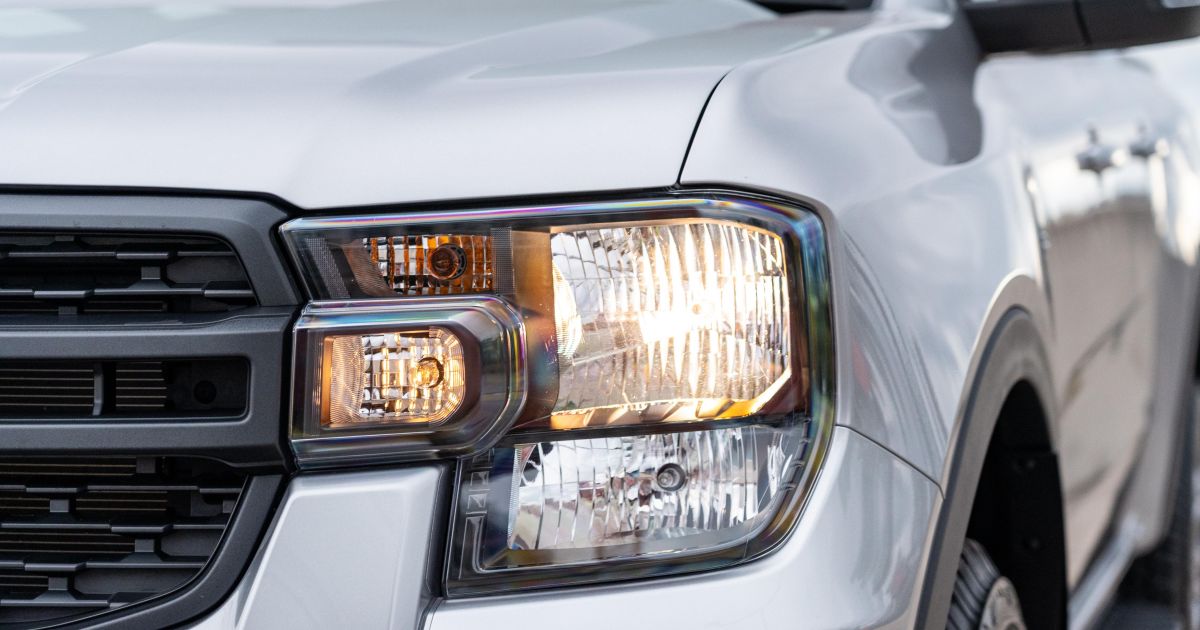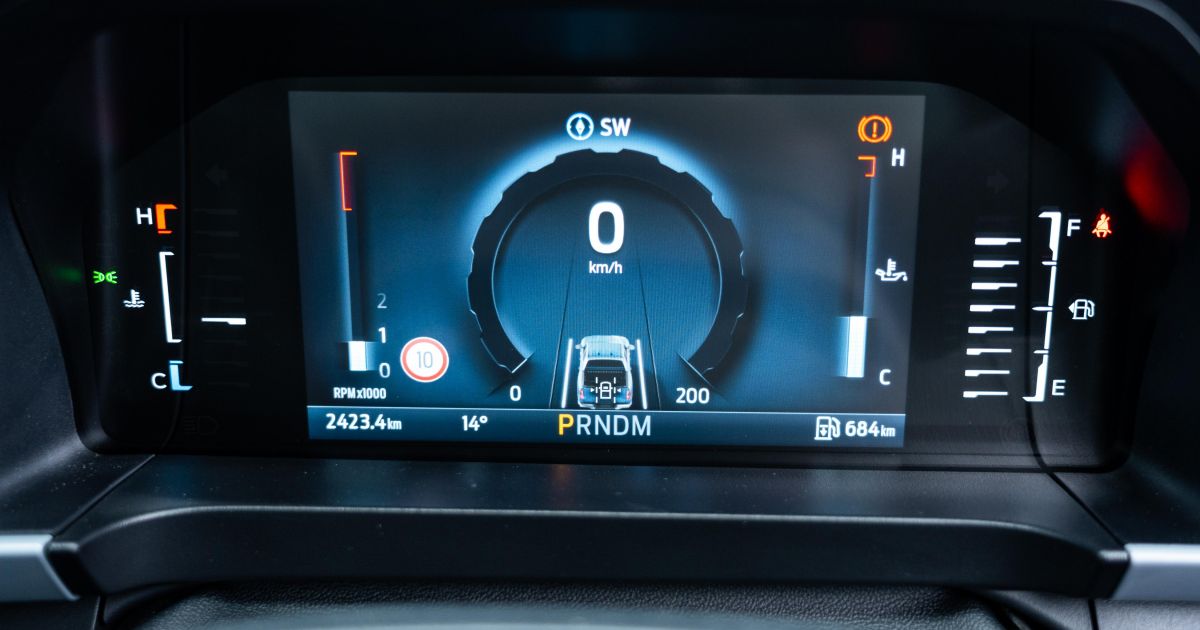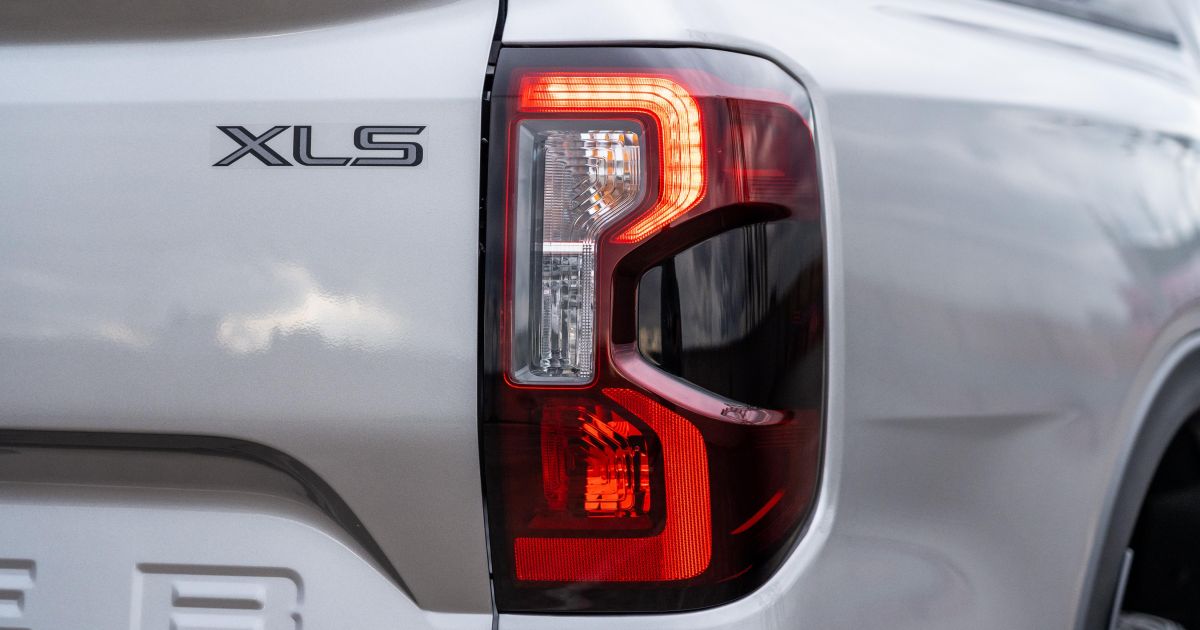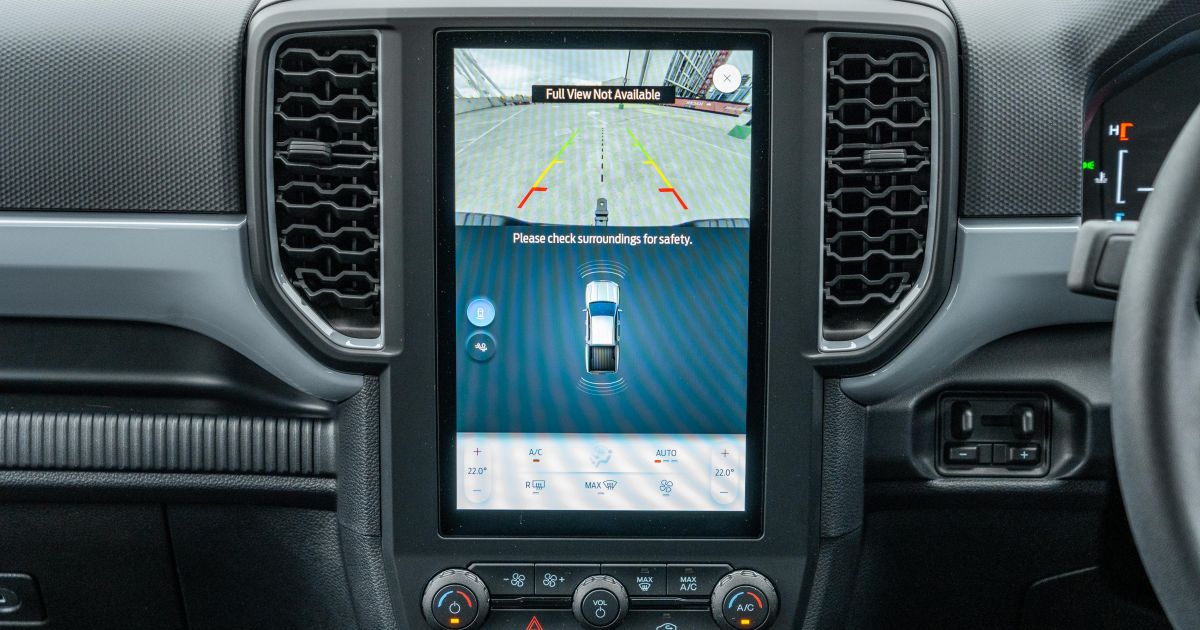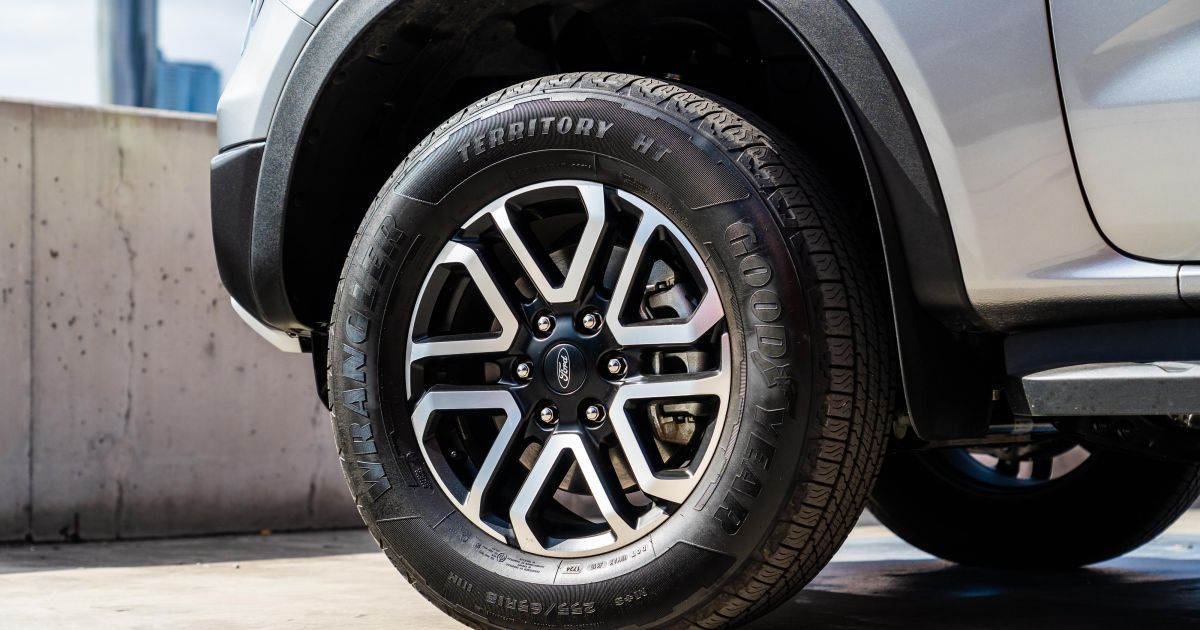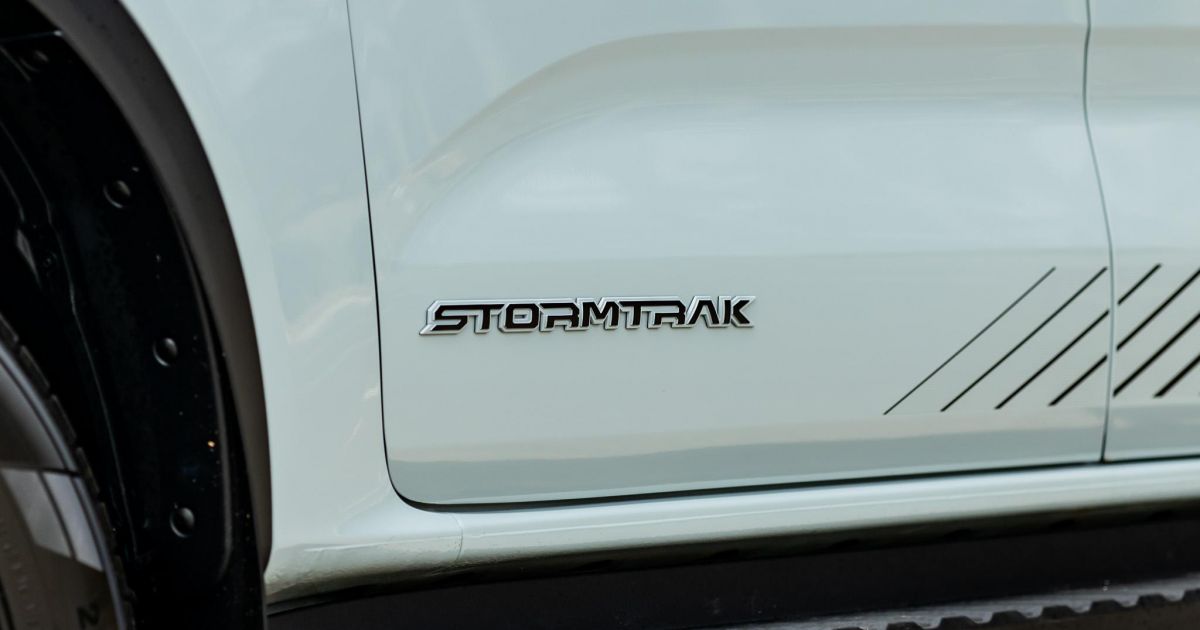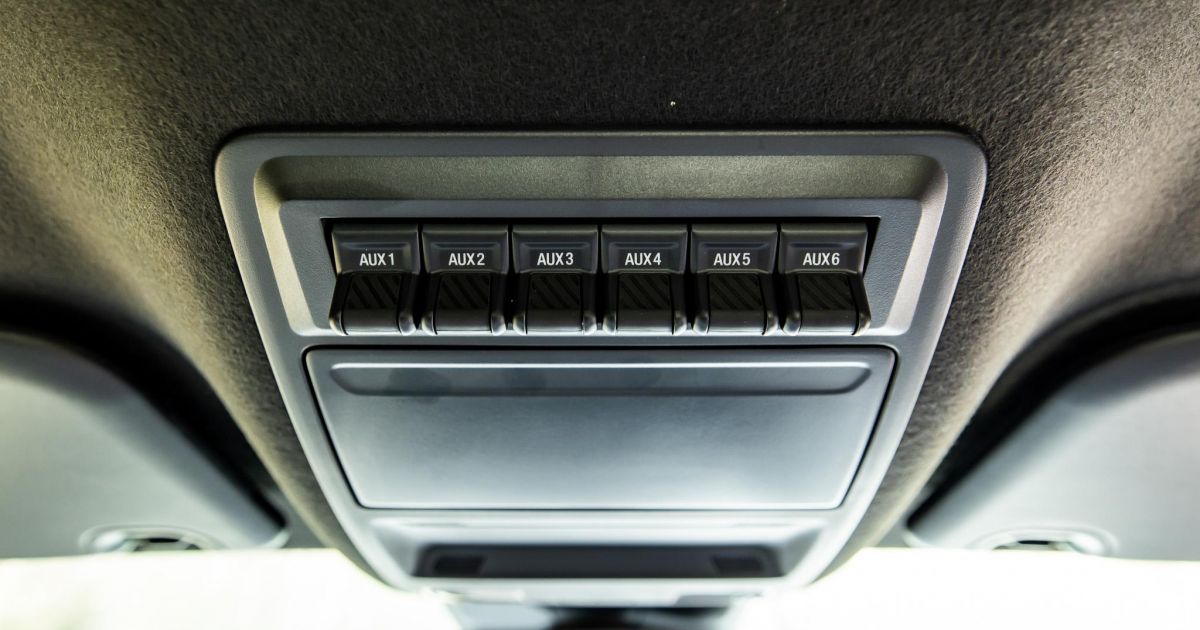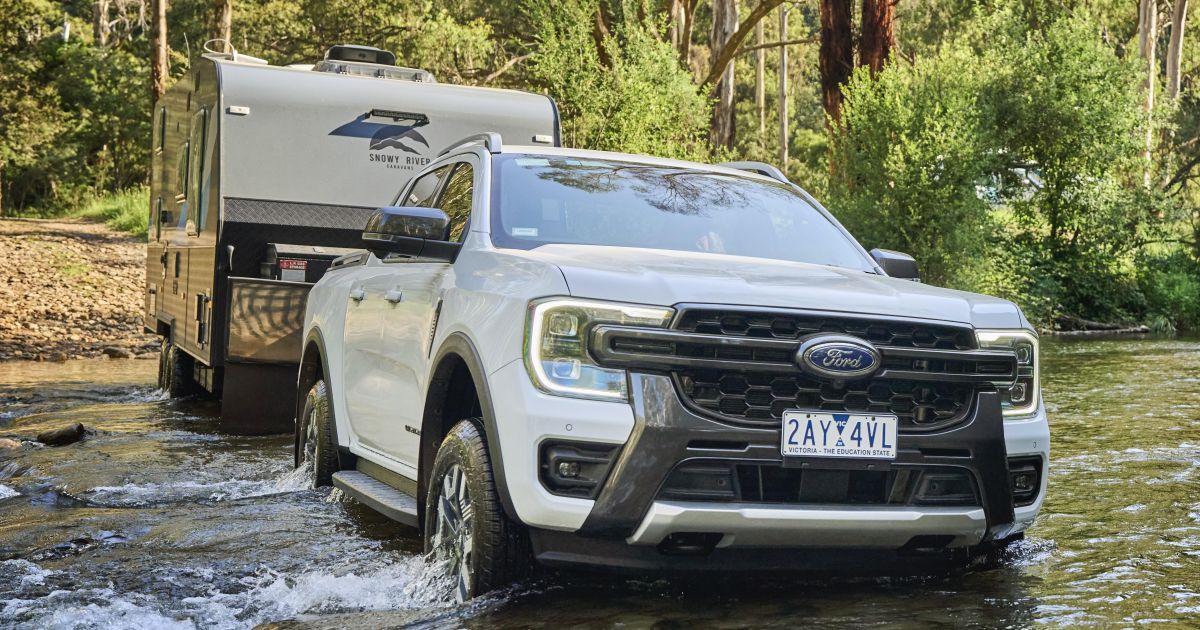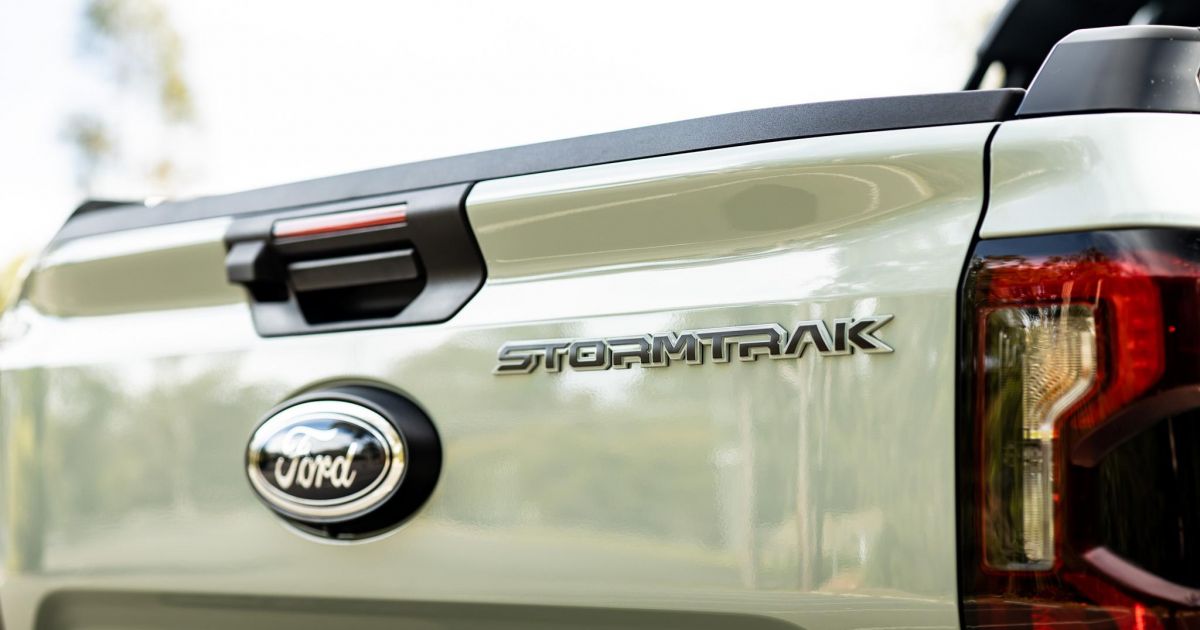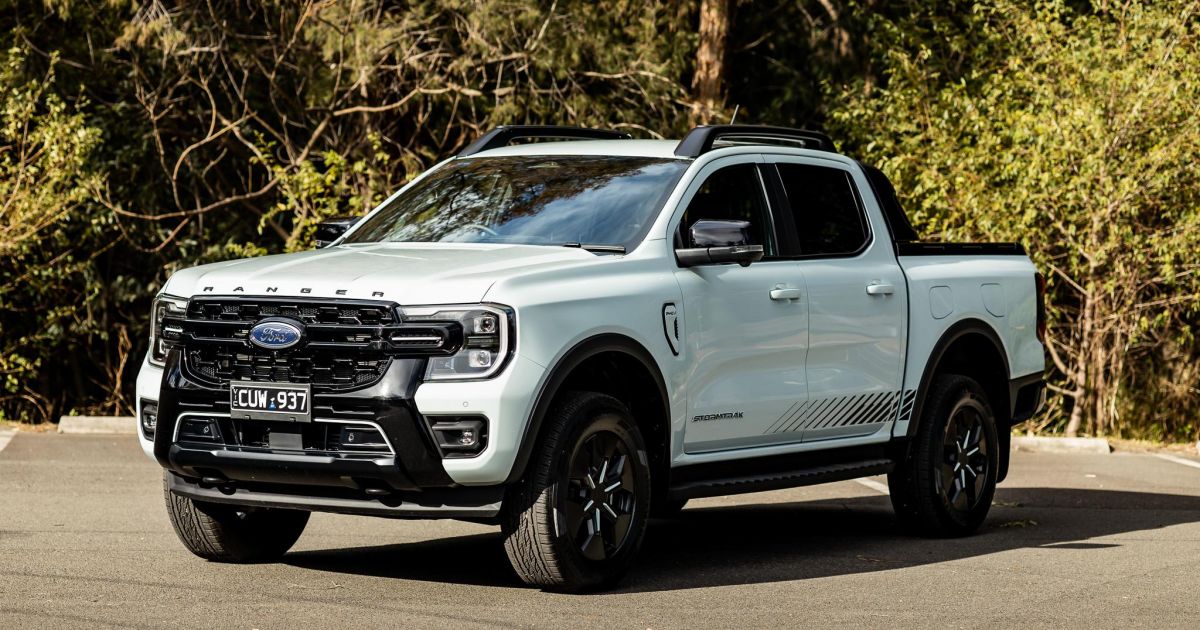The Ford Ranger plug-in hybrid model range has arrived, and it has to be said – four variants of this petrol-electric dual-cab 4×4 ute is certainly quite generous.
Sadly though, you’ll have to be very generous with your budget to get into a Ranger PHEV, especially if you’re considering a top-spec model.
That’s what we tested for this review – the flagship Stormtrak – and while we can see why you might be drawn to this plug-in pickup, the reality could prove harsh for this ute.
How much does the Ford Ranger PHEV cost?
It’s not as cheap as its Chinese rivals (see below), but is that a surprise? Probably not. But it’s also a pretty expensive ute more generally, this PHEV version of Australia’s top-selling ute (and new vehicle overall).
Ranger XL
| Model | Price before on-roads |
|---|---|
| 2025 Ford Ranger XL 4×2 single-cab/chassis | $36,880 |
| 2025 Ford Ranger XL 4×2 Super-cab/chassis | $39,380 |
| 2025 Ford Ranger XL 4×2 double-cab pickup | $43,280 |
| 2025 Ford Ranger XL 4×4 bi-turbo single cab/chassis | $47,980 |
| 2025 Ford Ranger XL 4×4 double-cab/chassis | $48,980 |
| 2025 Ford Ranger XL 4×4 bi-turbo Super-cab/chassis | $50,480 |
| 2025 Ford Ranger XL 4×4 double-cab pickup | $50,880 |
| 2025 Ford Ranger XL 4×4 bi-turbo double-cab/chassis | $52,480 |
| 2025 Ford Ranger XL 4×4 bi-turbo double-cab pickup | $54,380 |
Ranger XLS
| Model | Price before on-roads |
|---|---|
| 2025 Ford Ranger XLS 4×4 bi-turbo double-cab pickup | $57,630 |
Ranger XLT
| Model | Price before on-roads |
|---|---|
| 2025 Ford Ranger XLT 4×2 bi-turbo double-cab pickup | $56,440 |
| 2025 Ford Ranger XLT 4×4 bi-turbo Super-cab pickup | $61,640 |
| 2025 Ford Ranger XLT 4×4 bi-turbo double-cab pickup | $63,640 |
| 2025 Ford Ranger XLT 4×4 V6 double-cab/chassis | $66,940 |
| 2025 Ford Ranger XLT 4×4 V6 double-cab pickup | $68,840 |
| 2025 Ford Ranger XLT 4×4 PHEV double-cab pickup | $71,990 |
Ranger Sport
| Model | Price before on-roads |
|---|---|
| 2025 Ford Ranger Sport 4×4 bi-turbo double-cab pickup | $66,140 |
| 2025 Ford Ranger Sport 4×4 V6 double-cab pickup | $71,340 |
| 2025 Ford Ranger Sport 4×4 PHEV double-cab pickup | $75,990 |
ABOVE: Ranger Wildtrak
Ranger Wildtrak
| Model | Price before on-roads |
|---|---|
| 2025 Ford Ranger Wildtrak 4×4 bi-turbo double-cab pickup | $69,640 |
| 2025 Ford Ranger Wildtrak 4×4 V6 double-cab pickup | $74,840 |
| 2025 Ford Ranger Wildtrak 4×4 PHEV double-cab pickup | $79,990 |
Ranger Platinum
| Model | Price before on-roads |
|---|---|
| 2025 Ford Ranger Platinum 4×4 V6 double-cab pickup | $80,640 |
Ranger Stormtrak
| Model | Price before on-roads |
|---|---|
| 2025 Ford Ranger Stormtrak 4×4 PHEV double-cab pickup | $86,990 |
Ranger Raptor
| Model | Price before on-roads |
|---|---|
| 2025 Ford Ranger Raptor 4×4 3.0TT V6 double-cab pickup | $90,440 |
Clearly, there’s a price disadvantage compared to the two other PHEV utes on the market right now. There’s good reason the BYD Shark 6 is selling insanely well at $58,900 plus on-roads, while the GWM Cannon Alpha PHEV range kicks off from just $57,490 drive-away.
Obviously your specific requirements will dictate which will be the perfect fit for your needs. If towing and off-roading is a priority, the BYD mightn’t be the best pick, but if you’re using the vehicle as a lifestyle or dual-purpose truck, it’s arguably impossible to beat.
But seriously, I think the biggest competitor to the Ranger PHEV is the diesel V6 version, which is cheaper and, frankly, better.
And you don’t have to have the ute in Chill Grey (or bathroom blue, as my missus called it), with Agate Black being the other exterior paint choice. Both are no-cost options… And while I usually don’t think colours could dictate purchases, I do happen to believe that not having a proper white option could be a mistake here.
To see how the Ford Ranger stacks up against its rivals, use our comparison tool
What is the Ford Ranger PHEV like on the inside?
The interior of the Ranger Stormtrek has a distinct design with some Chill Grey highlights inside, but largely, it’s not much different to other high-spec Rangers.
That’s a good thing, because it feels familiar and the Ranger still has one of the nicer interiors in the class when it comes to usability and practicality.
There are buttons and dials for your air-con, volume and tuning, but you can also use on-screen menus if you wish. And there are nice inclusions such as pop-out cupholders near the vents, a highly configurable digital instrument cluster with heaps of info, and the portrait style 12.0-inch touchscreen media system with wireless smartphone mirroring tech, sat-nav, and much more.
There are menus on the screen to allow you to set up charging timers and even precondition the cabin to be cool or warm for those challenging midweek mornings, and you can also use on-screen menus to adjust what’s happening with the handy Pro Power Onboard vehicle-to-load sockets in the tub (each outputting up to 3.45kW).
The screen can help you turn the ute into a giant petrol generator that will replenish the battery and keep things charged up, and beyond that there are menus aplenty to configure different components, plus a brilliant off-road view system with a forward-view camera to see what’s ahead and where your tracks are heading (and that screen also allows you to trigger the electronic rear diff lock as well).
All the main controls are where they should be, and the steering wheel has a number of learnable buttons – including a brilliant one that you tap twice to turn off the lane keeping system if you don’t like that pushy feeling tech.
Meanwhile, there is also good comfort and convenience, with cupholders between the seats, a reasonably large centre console bin, bottle holders in the doors, vanity mirrors with lights, and an overhead auxiliary switch bank, which could be great for adding accessories.
In the second row there isn’t an abundance of space, but it is roomy enough for a grown-up to sit behind a taller driver. At 182cm/6’0”, I managed to slide in behind my own driving position, but my knees were brushing the seat ahead, although there is good headroom, foot room and shoulder space.
The seat itself is comfy, with a decent level of recline to the backrest, and there are vents for those riding in the back too. Device charging is sorted with a couple of USBs and a powerpoint, and there are also map pockets, a pair of cupholders in a flipdown armrest, and bottle holders in the doors.
One good thing for parents to pay attention to is the fitment of proper top-tether child seat anchors for the outboard seats – none of that “loop the harness through a loop into another loop and hope it’s tight enough” business here. You can more easily get a safe and sturdy feeling attachment to the rear bulkhead of the vehicle, and there are ISOFIX points for the window seats, too.
The rear seats also offer some extra storage below.
The boot (if you can call the tub that) is pretty generous, but there are some things to point out. The roller cover does eat into headboard space, meaning big bulky items may be fouled and not fit.
And the keener-eyed among you may have noticed that the tub depth is different for the PHEV models compared to the ICE versions – that’s because of the battery placement, and there is a bit of a hump in the load area that might be a snag consideration for forklift load-ins.
| Dimensions | Ford Ranger PHEV |
|---|---|
| Length | 5350mm |
| Width | 2207mm |
| Height | 1871mm – 1883mm |
| Wheelbase | 3270mm |
| Tub length | 1638mm at floor, 1471mm at top |
| Tub width | 1584mm (1233mm between arches) |
| Tub depth | 498mm |
To see how the Ford Ranger stacks up against its rivals, use our comparison tool
What’s under the bonnet?
The PHEV model uses a detuned derivative of the Mustang’s four-cylinder 2.3-litre turbo-petrol engine as the basis for the powertrain, teamed with a 75kW electric motor integrated into the 10-speed automatic transmission.
| Specifications | Ford Ranger PHEV Stormtrak |
|---|---|
| Engine | 2.3L 4cyl turbo-petrol |
| Engine outputs | 138kW / 411Nm |
| Peak electric motor output | 75kW |
| Peak system outputs | 207kW / 697Nm |
| Battery | 11.8kWh NMC li-ion – usable |
| Transmission | 10-speed Hybrid Transmission |
| Drive type | Full-time 4WD with low-range |
| Fuel economy (claimed) | 2.9L/100km |
| Electric energy consumption (claimed) | 18.7kWh/100km |
| Electric driving range (NEDC) | 49km |
| Fuel tank capacity | 70 litres |
| Fuel requirement | 91-octane unleaded |
| CO2 emissions | 66g/km |
| Braked tow capacity | 3500kg |
| Gross vehicle mass (GVM) | 3500kg |
| Gross combination mass (GCM) | 6580kg |
| Kerb weight | 2695kg |
| Payload | 808kg |
| Max. AC charge rate | 3.5kW |
All PHEV models have four-wheel drive, with the capability to run in 4A (four-wheel drive auto) on sealed surfaces, or 2H (rear-wheel drive high-range), 4H (four-wheel drive high-range) and 4L (four-wheel drive low-range).
But there are some big considerations for customers when it comes to the electrified powertrain.
The lack of high-speed DC charging means the ‘fast-charge on the go’ option isn’t available. That could be an issue for fleets, in particular.
Then there’s the maximum AC charging rate of just 3.5kW, which is weak by industry standards but still more than many domestic power outlets offer.
And while the battery’s claimed EV driving range seems appropriate on paper at 49km, in reality I only managed to get 37km in a best-case scenario (the other time I tested it, I got 35km).
Plus there’s the fuel consumption claim of 2.9L/100km, which isn’t realistic. Double it and you’re close to what you will achieve if you start off with a full battery and deplete it, as I did on this test. In that instance for the first 100km, I saw a return of 5.6L/100km. That is impressive, no doubt, but it is going to be limited in its real-world application.
Then I wanted to see what was realistic to expect once you continue on – as I like to say, the next 100km. And running it as a hybrid, leaving the ute to its own devices, I saw 8.0L/100km, which is close to the consumption and therefore range of an equivalent diesel Ranger – and that was including a displayed 24km of EV driving.
So there is no doubt that the powertrain is clever in its power management strategy, and the ability to charge electrical devices will be handy for tradies and campers, but the sad reality for this ute is that it doesn’t meet the market for electric driving range nearly as well as its rivals.
To see how the Ford Ranger stacks up against its rivals, use our comparison tool
How does the Ford Ranger PHEV drive?
This Ranger doesn’t drive like other Rangers.
That mightn’t surprise you in terms of the powertrain, but what was unexpected (for me at least) was the way it drove more generally.
The suspension tune has been recalibrated to deal with extra weight (and it is a heifer of a thing at 2695kg unladen), and it doesn’t have the same sort of body composure or, ultimately, the same sort of comfort as a high-spec diesel Ranger.
It feels its weight, and that bulk has an impact on the overall driving manners, but also the steering feels completely different. It has a different level of weighting and accuracy, and frankly it’s not as good as the diesel Ranger is in terms of ease of parking, or enthusiastic direction changes.
This might sound like I’m giving the Ranger PHEV a pasting, but the drive experience is still head and shoulders above most of the other utes in the segment. It’s just that, in context of diesel Ranger variants (and, heaven forbid I forget the Raptor) the PHEV offers the least impressive overall drive experience in terms of handling, dynamics, steering and comfort.
But again let me reiterate… it’s still better than just about any other ute in the market.
So what about the powertrain? It’s refined. It’s well mannered. It’s pretty engaging. And it has heaps of grunt. And whether you’re aiming to drive it purely as an EV as much as possible, or you know you’ll be doing more hybrid driving than fully electric, you’ll be getting a very agreeable experience.
There are four modes to select from: EV Now, for full EV power; EV Auto, which decides how to apportion the fuel sources; EV Later, which saves the battery for later and prioritises petrol power; and EV Charge, which will make the engine act like a generator to top up the battery.
I wanted to see what the real-world EV driving experience is like, so I did what many tradies do – commuted on the motorway towards Sydney after a full recharge. I hit the EV mode selector, chose ‘EV Now’, and took off.
As I said, I got 37km from a full charge – but the engine booted up when the powertrain was cold.
Because I left in 6-degrees Celsius temperatures, the powertrain overruled my plan to run in full-EV mode firstly. Even so, I always planned to do 100km to see what happened, then another 100km to check the hybrid-drive fuel use. Those findings are in the section above.
So, even when the powertrain was cold, it was smooth to transition between electric and petrol and back again, though there is a noticeable feeling of gear shifts as you drive, even fully electrically.
Once the engine kicks into life there’s not too much noise or vibration, which will be a pleasant reprieve for existing diesel Ranger owners. It is smooth, and it’s also smart in the way it will dip in and out of EV mode in different situations.
Like I said, almost one in four kilometres of my ‘EV Auto’ hybrid drive was electric, so that gives you an idea of the actual real-world experience of driving it with a depleted battery.
There is regenerative braking as part of this powertrain too, which will help greatly in feeding some potentially lost kinetic energy back to the battery. But it has a negative impact on the driving experience, too, with a brake pedal action that can be hard to judge.
Likewise, because of the perky electric motor response, driving in stop-start traffic can be a bit of a twitchy experience.
So, like I said, the PHEV system is good, the ute is good, but it’s just not the best Ranger to drive.
| Off-road dimensions | Ford Ranger PHEV Stormtrak |
|---|---|
| Track front and rear | 1630mm |
| Ground clearance | 226mm |
| Approach angle | 30.2 degrees |
| Departure angle | 24.2 degrees |
| Ramp breakover angle | 20.4 degrees |
| Wading depth | 800mm |
To see how the Ford Ranger stacks up against its rivals, use our comparison tool
What do you get?
The Ranger Stormtrak is almost like the PHEV version of the Platinum, but with a few differences. The most notable inclusion is the clever hidden roof rack system and sliding sailplane that allows you to turn your show pony ute into a Clydesdale workhorse, simply by sliding the ‘bar’ back and then you’ve got a functional rack system.
ABOVE: Ranger XLS
2025 Ford Ranger XL equipment highlights:
- Acoustic windscreen
- 16-inch steel wheels
- All-season tyres
- 16-inch steel spare wheel
- Front disc and rear drum brakes
- Heavy-duty suspension
- Black grille
- Halogen headlights
- Halogen daytime running lights
- LED central high-mounted tail light
- LED tail-lights (pickup only)
- Tailgate with lift assist (pickup only)
- Integrated tailgate step (pickup only)
- 10.1-inch Sync4 portrait touchscreen infotainment system
- Wireless Apple CarPlay and Android Auto
- Embedded modem
- Remote start via FordPass app
- 8.0-inch digital instrument cluster
- Tilt and telescopic steering column adjustment
- Ebony cloth upholstery
- Eight-way manual driver seat
- Four-way manual front passenger seat
- Vinyl floor covering
- Power rear windows (double cab only)
- Single-zone climate control
- Electronically locking rear differential (4×4 models only)
- Conventional gear selector
- Mechanical handbrake
Ranger XLS:
- 400-Watt power inverter
- 16-inch Dark Sparkle Silver alloy wheels
- Black side steps
- Halogen front fog lights
- Black grille with silver accents
- Carpet flooring
- Driver floor mat
- Drive mode selection
- Tow bar
- Trailer light check
- Integrated trailer brake controller
- Body-colour door handles
- Six-speaker sound system
- Proximity entry with push-button start
- Dual-zone climate control
- Rear seat air vents
- Satellite navigation
- DAB+ digital radio
ABOVE: Ranger Sport
Ranger XLT adds:
- 17-inch alloy wheels with all-season tyres
- 17-inch steel spare wheel (standard on diesel, no-cost option for PHEV)
- Rear disc brakes
- Electronic handbrake
- Leather-wrapped ‘e-Shifter’ gear selector
- PHEV-specific drive modes:
- Auto EV, EV Now, EV Later and EV Charge
- 2300W interior outlet
- 4×2 locking rear axle
- Front grille with chrome central bar
- LED headlights with C-shaped LED daytime running lights (diesel only, halogen for PHEV)
- Front-mounted tow hook
- Black sports bar (pickup only)
- Rear tub illumination (pickup only)
- Bedliner with 12V socket (diesel pickups only)
- Spray-in bedliner with 12V socket (super cab only)
- 2x 3450W bed outlets (PHEV only)
- 12-inch touchscreen infotainment system (PHEV only)
- Leather-wrapped steering wheel
- Electrochromatic mirror
- Rain-sensing wipers
Note: Acoustic windscreen doesn’t feature on XLT and above.
Ranger Sport adds:
- 18-inch alloy wheels
- 18-inch spare wheel
- Dark accent grille
- Dark exterior accents
- Two front-mounted tow hooks
- Skid plate
- LED headlights with C-shaped LED daytime running lights (PHEV only)
- Front floor mats
- Rotary drive mode selector
- Wireless phone charging
- Off-road screen
- 12-inch touchscreen infotainment system (PHEV only)
- Ebony leather upholstery with ‘SPORT’ embossing
- Eight-way power-adjustable driver seat
- Six-way manual front passenger seat
Ranger Wildtrak adds:
- Goodyear Wrangler all-terrain tyres
- Unique Wildtrak sports bar
- Power tub roller shutter
- Cargo management system
- Unique Wildtrak front grille with mesh pattern and Boulder Grey accents
- Exterior side mirrors with puddle lamps and zone lighting
- Roof rails
- Aluminium load box tie-down rails
- 12-inch touchscreen infotainment system
- Ambient lighting
- Pull-out dash-mounted cupholders
- Unique Wildtrak leather-accented upholstery
- Heated front seats
- Eight-way power-adjustable front seats
ABOVE: Ranger Stormtrak
Ranger Platinum adds (over Wildtrak):
- 20-inch alloy wheels
- Goodyear Territory HT tyres
- Silk Chrome exterior trim highlights
- Unique grille
- ‘Platinum’ badging on the bonnet, front doors and tailgate
- Matrix LED headlights
- Auto-levelling LED daytime running lights
- Full LED tail-lights
- Damped (gas-strut) tailgate
- Black paint roof (no-cost option to revert to body-coloured roof)
- Flexible Rack System (FRS)
- Power roller shutter
- 12.4-inch digital instrument cluster
- B&O premium sound system
- Auxiliary switch bank
- Premium floor mats
- Heated steering wheel
- Premium quilted, perforated leather-accented upholstery
- Heated and ventilated front seats
- 10-way electrically adjustable front seats
- Driver memory seat
- ‘Platinum’ badging on front seats, mats and upper glovebox
- Accent stitching and decorative finishes
Ranger Stormtrak adds (over Wildtrak):
- Chill Grey wheel highlights
- Body-colour trim
- Thick roof racks
- Matrix LED headlights
- Stormtrak decals
- B&O premium sound system
- Flexible rack system
- Auxiliary switch bank
Ranger Raptor adds (over Wildtrak):
- 17-inch alloy wheels in BF Goodrich K02 all-terrain tyres
- 17-inch alloy spare wheel
- Unique grille with ‘F-O-R-D’ lettering
- LED front fog lights
- Full LED tail-lights
- 2.3mm steel front bash plate
- Unique Raptor dual tow hooks
- Spray-in bedliner
- Active exhaust
- Fox racing 2.5-inch live valve suspension
- Electronically locking front and rear differentials
- 12.4-inch digital instrument cluster
- 10-speaker B&O premium sound system
- Ambient lighting
- Auxiliary switch bank
- Heated and 10-way power-adjustable Ford Performance seats with embossed Raptor logo and Code Orange accented stitching
- Seven drive modes
- Normal
- Slippery
- Mud/Ruts
- Sand
- Sport
- Baja
- Rock Crawl
To see how the Ford Ranger stacks up against its rivals, use our comparison tool
Is the Ford Ranger PHEV safe?
ANCAP has explicitly stated that the PHEV versions of the Ranger are not five-star rated (just like the petrol-powered Raptor). So, the 2022 maximum safety rating for diesel Rangers doesn’t currently apply here. That may change if ANCAP assesses the PHEV, and I’m sure fleet customers will be hoping that’s the case.
2025 Ford Ranger safety equipment highlights:
- 9 airbags
- incl. driver, passenger knee airbags
- incl. front-centre airbag
- Autonomous emergency braking (AEB)
- Car, pedestrian, cyclist detection
- Junction assist
- Adaptive cruise control
- Blind-spot assist
- Rear cross-traffic alert (pickup)
- Lane departure warning
- Lane-keep assist
- Road edge detection
- Reversing camera (pickup)
- Rear parking sensors (pickup)
- Trailer Coverage (with optional Tow Pack)
Ranger XLS adds:
- Front parking sensors
- Extended blind-spot monitoring with trailer coverage
Ranger XLT adds:
- Adaptive cruise control incl. stop/go (excl. PHEV)
- Blind-spot monitoring incl. Trailer Coverage
- Lane centring assist (excl. PHEV)
- Traffic sign recognition
- Tyre pressure monitoring
Ranger Sport PHEV adds (over XLT PHEV):
- Intelligent adaptive cruise control incl. stop/go, traffic sign recognition
- Lane centring assist
Ranger Wildtrak PHEV adds (over Sport PHEV):
- Surround-view camera
- Pro trailer back-up assist
The optional Touring Pack adds a surround-view camera, while the Technology Pack adds a surround-view camera and pro trailer back-up assist for Sport PHEV only.
To see how the Ford Ranger stacks up against its rivals, use our comparison tool
How much does the Ford Ranger PHEV cost to run?
If you can work within the parameters of this plug-in ute, it could be super cheap to run on the daily. If you don’t exceed the battery range, it almost costs you nothing to run. And even if you have to use the petrol engine, it will still be pretty efficient, based on my findings.
| Servicing and Warranty | Ford Ranger PHEV |
|---|---|
| Warranty | 5 years, unlimited kilometres |
| High-voltage battery warranty | 8 years, 160,000km |
| Roadside assistance | 12 months, then service-activated up to 7 years |
| Service intervals | 12 months or 15,000km |
| Capped-price servicing | 5 years, $399 each |
| Total capped-price service cost | $1995 |
According to the brand’s website, the other versions of the Ranger are capped at a maximum cost of $379 per visit for the first four visits, so the PHEVs cost $20 more per service.
To see how the Ford Ranger stacks up against its rivals, use our comparison tool
CarExpert’s Take on the Ford Ranger PHEV
It is a lovely thing to drive – and there is no denying that it feels complete and resolved in ways that the cheaper Chinese options cannot match. There’s also the towing capacity and off-road prowess to consider.
But in other ways, the Ranger PHEV is a PHAIL, because it doesn’t have enough EV driving range to be a handy commuter choice for tradies in the real world, and the charging rates for the small battery pack are dismal.
I like the Ford Ranger a lot. But this is probably the least convincing version of this truck to date.
CarExpert can save you thousands on a new Ford Ranger. Click here to get a great deal.
Click the images for the full gallery

